
It’s time! On Monday, July 19, we will finally know which games won Spiel des Jahres and Kennerspiel des Jahres 2021. I really think this is an exciting year with six very strong nominees that all have a lot of arguments going for themselves (and a few against). Even after following the whole year releases very closely, I’m still torn as to who’d be the favourites to win. Algorithms won’t be much help here either – the sample is just too small. So I’ll have to go with my instincts instead… 🤷
Last year I manage to call both awards correctly. Quite a bar to clear again.
Let’s check out the nominees!
Nominated for Spiel des Jahres 2021

Before we dive into the individual games, let’s look at some numbers to see some objective measures for them – as far as this is possible. What we’ve got at our disposal are the recommendations to the S_d_J bot, BoardGameGeek’s average rating, and the Bayesian rating. Additionally, I’ve created a poll on BGG where the geeks could have their say:
| Game | R.G | Average | Bayes | Poll |
|---|---|---|---|---|
| MicroMacro: Crime City | 8.0 | 7.9 | 6.9 | 61% |
| The Adventures of Robin Hood | 7.2 | 8.1 | 6.1 | 32% |
| Zombie Teenz Evolution | 2.4 | 8.1 | 6.0 | 7% |
Overall, MicroMacro seems to be favourite, but will it survive our own scrutiny?
MicroMacro: Crime City
1–4 players, 15–45 minutes, 10+ years, light (1.1)
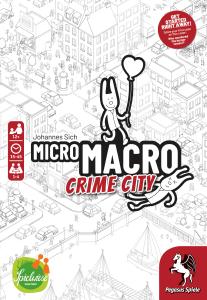
As has been discussed many times, possibly the greatest strength is the immediacy of this game. Better than no rules required: not even opening the box is required. Genius. Also, the jury emphasises that the winner should be ambassador for the hobby board gaming. MicroMacro would definitely broaden many people’s perception of what a modern board game can be. On top of that, it also made quite the impression amongst the more hardcore gamers, which shows its universal appeal.
But before we get too excited, there are some important caveats. The crime theme might be the most obvious – murder and other quite mature topics might not be everyone’s idea of family entertainment. The publisher certainly struggles with this: my edition says 8+ years on the box, later editions seem to say 12+. They also introduced some form of content warning for the successor, so parents can stay clear of cases that might not be suitable for their offspring. Overall, judging by their statements, the jury seems to have little objections to some comic figures being murdered, so this might not be an obstacle to the red meeple after all.
The other issue is player count. The box claims that this game is for 1 to 4 players, but the jury “corrected” this in their announcement to 1 to 3 players. Those who played the game know that sometimes even two players can be a crowd, so this game wouldn’t really be one to be enjoyed by the whole family around the Christmas tree – and candles definitely won’t provide enough light to read the details off that giant map… 🕯
Let me take this opportunity to address the “it’s not a game, it’s a puzzle” faction. First off, even if this were true, the jury clearly wouldn’t care: Already in their second year, in 1980, they awarded a special prize for the Rubik’s Cube, which undoubtably is a solitaire puzzle. An experience someone who loves games would enjoy? Bring it on…
Still, I’d like to make the argument that this is, in fact, a game. The standard version, where the game asks you to answer one question about the case after another, might present itself as a series of puzzles, with no player decisions to influence the course of the game at all. But I’d urge anyone playing this game to quickly switch to the advanced version. There, players are presented with the crime, but are then left alone to investigate the full story on their own. No guiding hand by the game, no feedback if the investigation is complete. The group needs to decide for themselves in what order to investigate the different scenes and when to call it complete. This experience differs crucially from a classic puzzle that gives you unambiguous feedback when it’s done.
But then again, it really doesn’t matter anyways…
The Adventures of Robin Hood
2–4 players, 60 minutes, 10+ years, medium light (1.7)
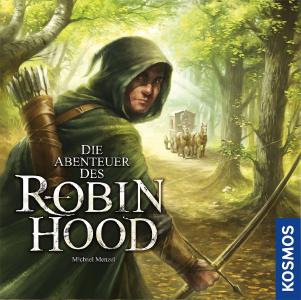
Robin Hood has been praised for its narrative experience that perfectly blends art, mechanics and storytelling. The classic tale will draw in many people for their childhood memories. Moving around freely on a game board and opening “advent calendars” along the way just sounds like a lot of fun, and the book looks gorgeous.
Keeping in mind that there is no English edition yet and consequently only very few ratings on BGG, it is actually remarkable how highly our algorithm already rates the game. By all appearances, this is a strong contender.
If there’s one drawback, it might be the price point. It retails at around 50€, but will have run its course after a finite number of plays. This might not sit well with the very casual audience the award is aimed at.
Further, it appears the designer chose a pretty traditional set of characters. This might please fans of the original stories, but for my taste I’d appreciated the courage for a more diverse representation in 2021. The jury wants to award a game for everyone, so any player should be able to see themselves in the game.
Zombie Teenz Evolution
2–4 players, 15–25 minutes, 8+ years, light (1.3)
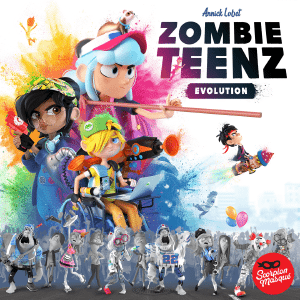
There’s no way around it, this is the dark horse amongst the nominations. Neither the core mechanics nor the zombie theme seem terribly exciting for hardcore gamers, but for many people that haven’t played dozens of zombie games, this is actually surprisingly appealing. The legacy elements promise an interesting and engaging story, and unlike Robin Hood, this game has been praised for its diverse cast, including a wheelchair on the cover. I imagine this must mean the world for a lot of kids who feel very empowered by this image.
The numbers don’t look very good for this game, but then again, it had just been released and it doesn’t really seem to be targeted at BGG’s core demographics. But there is a serious obstacle to winning the main award: both the cartoon artwork and the “teenz” in the title suggest that this is a family game. And while many people will refer to the red award as the “family game of the year”, the jury will go through great length to avoid this term since, again, the Spiel des Jahres is meant to be for everyone and that includes groups without children. Pinning the award on what appears to be a game for a young audience might exclude some loyal fans.
Who will win?
I’ve been going back and forth on this – as you can tell, there’s pros and cons for each of the nominees. In the end though, my money is on MicroMacro: Crime City to win Spiel des Jahres 2021, ahead of The Adventures of Robin Hood on close second, with Zombie Teenz Evolution in a respectable, but slightly more distant third place. The immediate access of MicroMacro and potential shift in the perception what a game can be is just too enticing to pass.
Still, any of the potential outcomes on July 19 wouldn’t surprise me. It’ll be exciting!
Nominated for Kennerspiel des Jahres 2021

Let’s take a look at the same metrics as above, but for the Kennerspiel nominees:
| Game | R.G | Average | Bayes | Poll |
|---|---|---|---|---|
| Fantasy Realms | 6.8 | 7.5 | 7.0 | 5% |
| Lost Ruins of Arnak | 7.5 | 8.1 | 7.6 | 79% |
| Paleo | 7.6 | 7.9 | 6.8 | 16% |
This promises an even closer race – the numbers certainly don’t yield any clear favourites. 🤷
Fantasy Realms
3–6 players, 20 minutes, 14+ years, medium light (1.7)
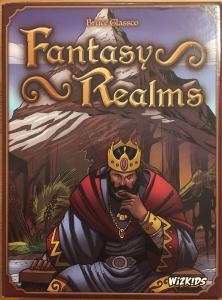
Fantasy Realms has been around internationally for some time and has garnered a loyal fanbase, though it failed to make a huge impact so far. Winning Kennerspiel could change that.
It certainly has a lot going for itself. A quick card game with lots of winning combinations to be discovered sounds like something the jury always appreciates, in particular since they clearly lean towards simpler games for both awards. The fast playing time and wide player count could make it the ideal “step up” for those who seeks the next challenge after enjoying a Spiel des Jahres winner.
There is the issue of its bland theme and artwork. It doesn’t have to be a negative though, as a generic setting might just mean lots of people will be open to playing a particular game. In this particular case, the artwork does feel pretty old-fashioned, including some of the more problematic tropes of the genre. When drawing in new gamers, appealing artwork is very important, so I really think this game could be a winner with better artwork.
Lost Ruins of Arnak
1–4 players, 30–120 minutes, 12+ years, medium (2.8)
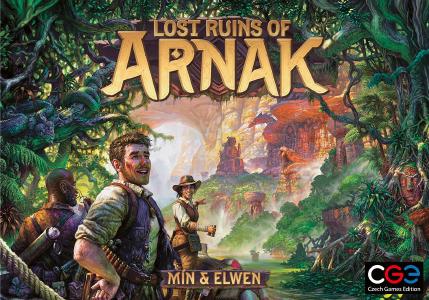
Arnak certainly is a fan favourite (currently #63 on BGG, and climbing) – choosing this game could make the skeptical crowd on the ‘geek very happy. Probably unsurprisingly, it’s also by far the most selected option in the poll. The game does come with a broadly appealing theme, a successful merging of two evergreen mechanics (deck building and worker placement), and great development work that makes playing the game very intuitive.
It is on the pretty heavy side for the award though. There’s a lot going on in terms of different tiles, tracks, effects… If a Kennerspiel is meant to be one step up, this game might really be two steps.
It also seems to draw some lukewarm responses from critics. While the execution of the design is generally praised, it doesn’t seem to do anything special. On the other hand, this comes from people who have played hundreds of games and chase that next big innovation, while the Kennerspiel award is targeted at people who might have never played a worker placement nor deck building game and might really enjoy those mechanics here.
On that note: I’ve heard there’s another Indiana Jones movie in the making – I smell a branded version of Arnak soon… 🤠
Paleo
1–4 players, 45–60 minutes, 10+ years, medium (2.6)
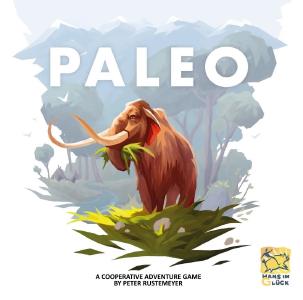
Paleo was for me an early favourite and hasn’t disappointed so far. While it’s not exactly a “fresh” theme, the prehistoric setting hasn’t worn out yet, the graphics are clean and inviting and the mammoth on the cover definitely makes we want to explore more. But maybe most importantly the mechanics are the most innovative amongst the nominees – without leaving less experienced players lost. Every turn offers a quick but always interesting decision. As the Spiel nominees prove, co-operative games are in higher demand than ever, and this one has the whole table involved from the first to the last card in your deck.
As you can tell, I quite enjoyed playing Paleo and think it’s very much worthy of the Kennerspiel trophy. But it’s not just my enthusiasm, the critical response was very positive and might get second time designer Peter Rustemeyer’s hopes up.
Before we get ahead of ourselves, let’s consider what could get in the way of Paleo’s victory. First off, the often criticised rule book. The jury is very harsh when it comes to judging rule books – rightfully so, as badly written rules are the biggest obstacle in the way of players enjoying a game. But they wouldn’t have even recommended Paleo if they thought the rules as printed are too obtuse, so I doubt it’s a concern now.
The game is also on the heavier side of what’s usually consider for the award, but for me it’s about the same complexity as Wingspan – if anything easier to approach as a co-operative campaign game. Talking of which, the different modules and levels make it feel somewhat finite, but then again the levels are fairly replayable and the jury doesn’t seem to mind too much anyways.
One last sticking point might be player count. It’s well compatible with usual Kennerspiel metrics as printed on the box, but the rules start by saying that under no circumstances should you try this game for the first time with four players. That first play is really critical for a game that’s supposed to reach a wide audience, so this caveat could prove costly.
Who will win?
I’ll contradict the BGG crowd and say that Arnak has the lowest chance of winning Kennerspiel – despite all its quality there seems to be no “hook” that would draw new players in. On the other hand, judging by the jury’s statements, Fantasy Realms would make a fabulous winner – if it came with a fresher, more appealing look… So, after all my praises, it’s no surprise Paleo is my favourite to win Kennerspiel des Jahres 2021. However, I really do believe that all three nominees are very strong and have a realistic chance of winning.
That’s all for now – I feel like I need to apologise since it took me over two thousand words just to express “they’re all pretty good…” 🤷 Anyways, all this makes me just more excited for the announcement on July 19. 🤓